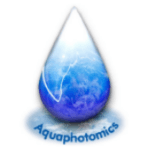
The latest paper published in the journal Spectrochimica Acta Part A: Molecular and Biomolecular Spectroscopy, titled “Aquaphotomics for monitoring of groundwater using short-wavelength near-infrared spectroscopy” is a result of a long collaborative research between 3 aquaphotomics teams: Aquaphotomics Research Department from Kobe University, Aquaphotomics group at Hungarian University of Agriculture and Life Sciences, and a young Yunosato Aquaphotomics Lab from Hashimoto city in Wakayama, Japan.

The paper is the latest achievement of a long-term research project taking place in Wakayama, whose first results were published in 2016 in Talanta journal (Kovacs, Z., Bázár, G., Oshima, M., Shigeoka, S., Tanaka, M., Furukawa, A., Nagai. A, Osawa, M., Itakura, Y. and Tsenkova, R. (2016). Water spectral pattern as holistic marker for water quality monitoring. Talanta, 147, 598-608.). The entire research served as a basis for establishment of the first aquaphotomics-based water monitoring system at the Yunosato spa of Shigeoka Co. Ltd where the ground waters are being extracted and which is functioning since 2016. It also led to the establishment of the first private Yunosato Aquaphotomics Lab, which has since then expanded the research into the food, cosmetics, soil, human health, and even the sound!
In the latest paper, the novelty compared to the previous studies concerned with water monitoring, is that, for the first time, we improved the robustness and assessed the feasibility of the water spectral pattern – WASP in the short near infrared wavelength to be used as an integrative water quality marker by excluding the absorbance bands that are most influenced by the environment, namely temperature and humidity.
The results of the study are also presented in a novel way to put more accent on the work associated with the selection of bands that can serve as water matrix coordinates – WAMACs. While there are numerous publications reporting results in the area of 1st overtone of water (1300 – 1600 nm), the selection of WAMACs in other regions of water near infrared spectrum is still somewhat of a difficulty for researchers, as we have found out from the audience attending aquaphotomics webinars. The process of selection of WAMACs from the available absorbance bands, as well as the assignments of the absorbance bands in the region 600 – 1050 nm have been provided in the paper in great details.
We showed which bands were influenced by humidity and temperature, and made sure that they are excluded from the final WASPs. This efficiently prevented “false alarms” due to the environmental changes led to development of robust, unique WASP for each of the mineral waters that is subjected to daily screening.
The paper is available online since 11 May, 2022 and can be found at the following address:
https://www.sciencedirect.com/science/article/pii/S1386142522005273#f0035
The study uniquely presents results how spectral patterns and hydrogen-bonding of groundwater samples were affected by changes in environmental factors – temperature, humidity, time and others. Despite these effects, Aquaphotomics analysis resulted in obtaining consistent, specific spectral patterns during the entire monitoring period, unique for each groundwater that can be used as its fingerprint and monitored over time. These results confirm that Vis/ NIR spectral pattern can be used as an integrative marker of water status, stable over time, providing the basis for an efficient cost-effective method for monitoring of water.
